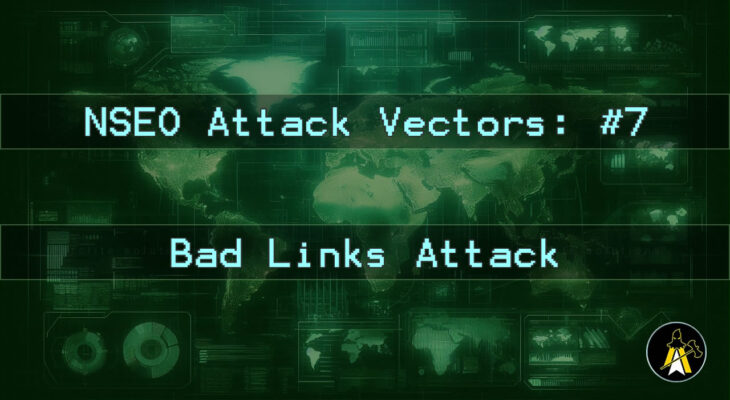Its name says it all – it’s a matter of getting your pages or site punished, for seeming to have manipulative links.
It’s probably the most known and talked about form of Negative SEO.
It’s also far less effective than people believe.
The reality is – Google do ignore a large number of links automatically.
So weird links from strange sites, from foreign sites, comment bombing links, adult links …
… the chances are, none of them are hurting you.
Google introduced an algo that targeted “link manipulation”,
and then had to make sure that they hadn’t left it so people could be attacked by people building bad links to competitors (which of course, some people did).
Years later – some people are still building bad links – they just aren’t hurting anyone.
Breakdown of a Bad Links Attack:
Well – I’ve said it’s not hurting anyone,
but the truth is, you can still use this method to harm a competitor – it just takes more brains, effort and creativity than what people realise.
So, though it’s more difficult/challenging to implement – the premise remains the same:
convince Google that the target site has been building links, (buying, sponsoring, exchanging, coercing, tricking etc.), with the intent to manipulate Search Engine Results.
When done (properly) the target site may be hit with link-based manual action (a penalty),
and see their rankings, traffic and likely earnings, take a hit.
Defending Your Business Against a Bad Links Attack:
In a somewhat ironic twist – the defence against “bad links”, is “good links”,
and “good behaviour” (not having a history of link spam etc.).
If Google thinks you’re a good site – clean, honest, above board – they are unlikely to believe you’ve built a bunch of questionable links. (Whereas, if you have a history of paying for links, exchanging links, spamming the net with link-drops in an effort to manipulate rankings … it’s more probable.)
Monitor your Inbound Links.
Tracking inbound links is a common enough task (there’s no shortage of tools).
Identifying “bad links” though – a little more difficult.
Identifying “bad links” that are impactful – even more difficult!
(If you’re hit with a link penalty, Google normally tell you in Google Search Console. Or you’ll find that certain pages have dropped massively for all rankings, or may even have been deindexed.)
What to do if you are the victim of Bad Links?
If – somehow – someone has managed to build bad links to your site, and it is having an impact, the only recourses you have, are the same ones as if you had built them your self:
- Go and remove the question link(s) from the sites.
- Request the origin/linking site to remove the link.
- Use the Link Disavowal Tool (LDT) in Google Search Console (GSC).
Warning.
The Link Disavowal Tool is dangerous. If you tell Google to ignore a bunch of links, it may well do so.
If those links are providing value, and are not deemed “bad”, then you’ve just lost a bunch of good links,
and whatever benefit they were providing!
And people do make such mistakes. They disavow links because they don’t know the origin site, or because it’s got a low score in whatever SEO tool they are using, or because it’s in a different language etc.
You have to look at the page – and decide!
If the content is garbage, or, if the site links out to garbage … then sure, disavow.

